What is the Best Steel for a Katana: Tradition, Decoration, Power

What’s in this article?
Finding the best steel for a Katana is crucial as it plays a significant role in the blade’s performance, durability, flexibility, aesthetics, and overall quality. In this article, we explore the best types of steel that are used to forge the katana. Starting with traditional steel, then to one best for functional reasons, and ending with our opinion about “the” best steel for a Katana.
Best for Authenticity – Tamahagane Steel
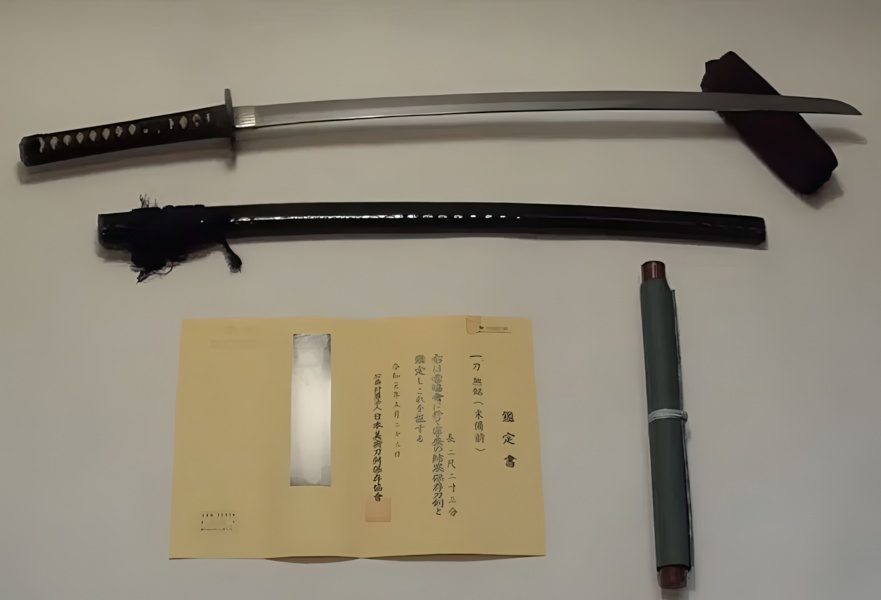
Historical Katanas are still created using Tamahagane, a type of steel made from iron sand (satetsu) found in Japan. Japanese swordsmiths still use this true Tamahagane Steel for creating nihonto using a traditional tatara furnace. The blade is created by folding the steel repeatedly to remove impurities and adjust the carbon levels.
Next, it is differentially hardened using a clay mixture before being quenched. This process gives it the distinct hamon and jihada patterns, a hard edge, and flexible spine. While these patterns can be achieved on newer swords, Tamahagane is the best for those who want to remain authentic.
Best for Cutting – High Carbon Steel
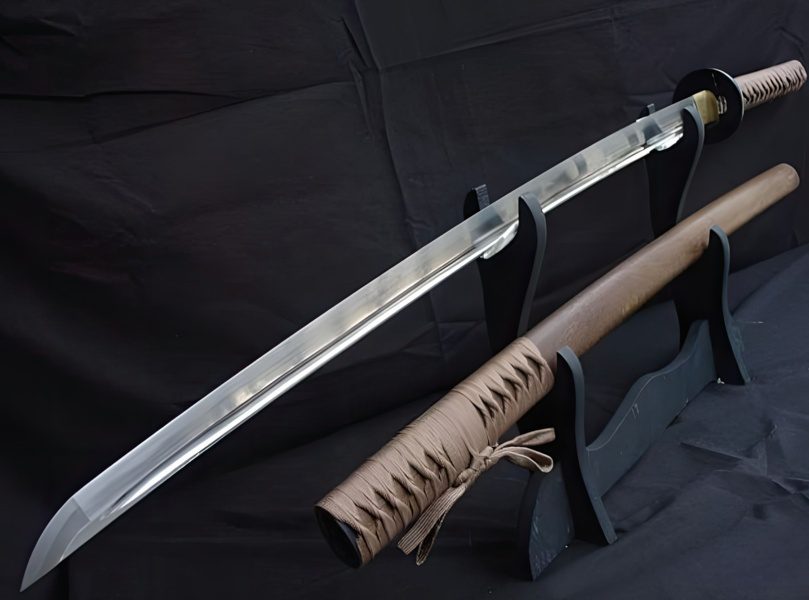
The best steel for a Katana used for functional purposes or tameshigiri (cutting tests) would be carbon steel. However, there are different types of carbon steel available. For cutting, a modern mono-steel blade would perform better than an authentic blade that has been folded as it is significantly harder and more durable while remaining flexible.
While tamahagane is a great steel for katana, the advancements in metallurgy means that different alloy steels with special attributes can be combined and used to create blades with specific characteristics.
Carbon
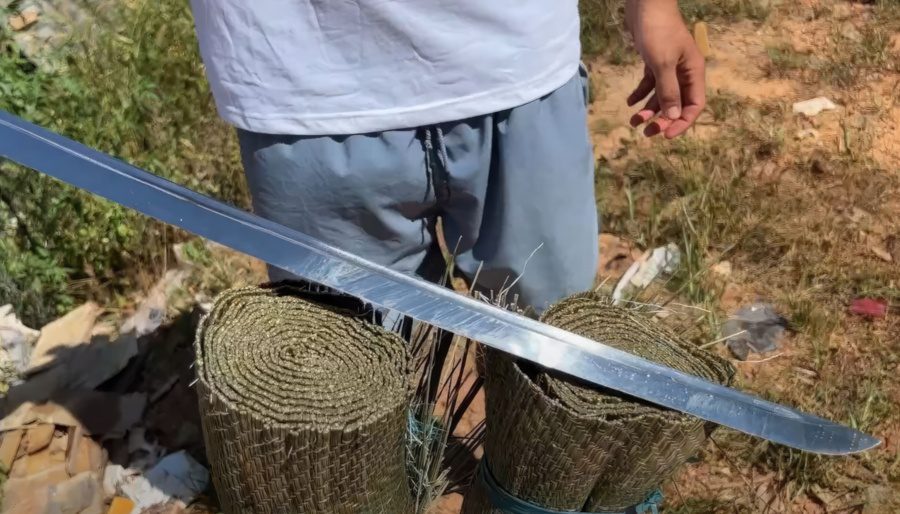
The most commonly used steel for a Katana blade is the simple 10XX series. Easy and simple to craft, these swords are often more affordable and effective for cutting tests. The last two numbers denoted by the “xx” in “10xx” represent the carbon percentage in the steel. A simple explanation is that the higher the carbon level, the harder and more brittle the Katana.
The 1045 series is the cheapest functional softer carbon blade that can be used effectively on light targets. The 1080 and 1095 steel types will make for a much harder blade with a higher edge retention rate, but more brittle and prone to breakage. That is why the best carbon steel for a Katana can be the 1060, a perfect balance between flexibility and sharpness.
Spring
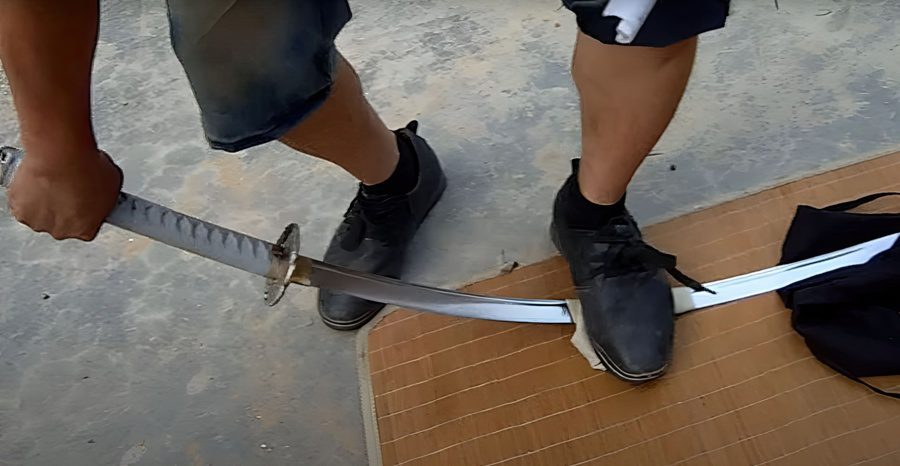
For flexibility purposes, spring steel is highly recommended, especially the 5160 and 9260 steels. Both are metal alloys that combine the same carbon content as a 1060 carbon blade, a limited amount of chromium, manganese, and silicon that results in a very flexible blade.
Spring steel Katanas can take a lot of stress without breaking, only bending even in extreme situations. The blade can even be bent back into its original shape. This makes Spring steel Katanas a great option for cutting tests, a testament to its higher katana price tag.
Tool
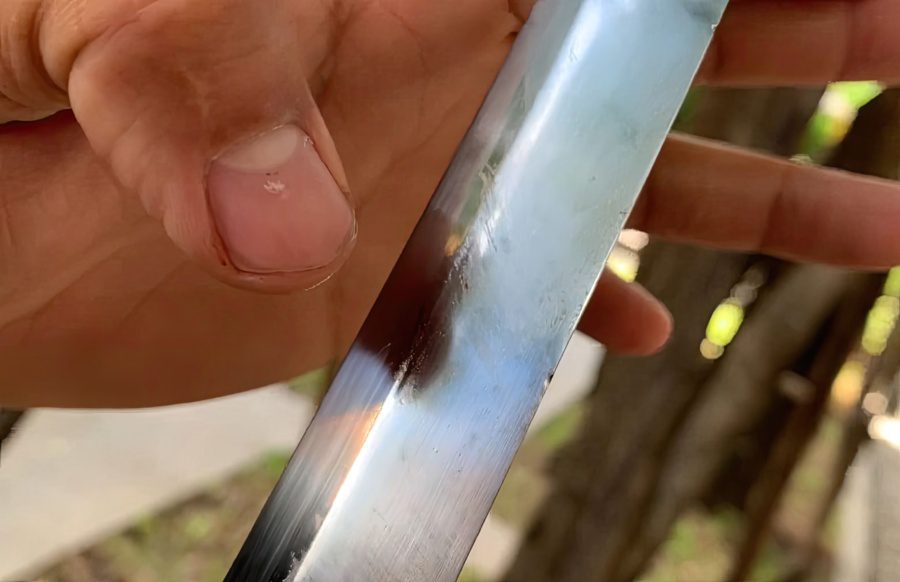
The strongest and sturdiest steel for a Katana is tool steel. These new and industrial blade steels are generally much more expensive due to their difficult crafting process. The most popular types are T10, L6-Bainite, and S7 Shock-Resistant Steel, and they all feature high carbon content and even tungsten.
That is why tool steel Katanas are great for heavy-duty chopping and cutting tests as they can hold their form after heavy abuse and even retain their edge. Tool steel Katanas have very high price tags but make for some of the most functional Japanese swords on the market.
Best for Decoration – Stainless & Damascus Steel
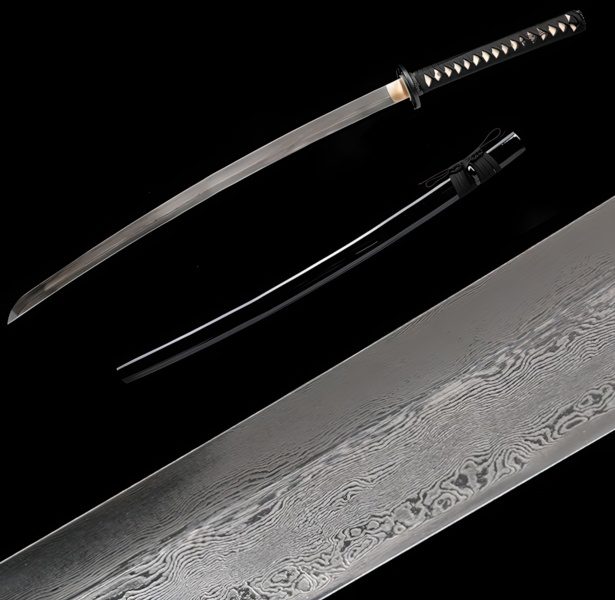
The best steel for a decorative Katana is stainless steel as it has a high amount of chromium, making it rust and corrosion-resistant. These blades should not be used for cutting as they are brittle.
Damascus steel is a type of folded steel, also great for decorative pieces. The folding process infuses air bubbles into pure carbon steel so it ends up with beautiful layers, but sacrificing the blade’s functionality. There are some expensive Damascus Steel Katana blades that can be used as functional cutting swords but due to the folding process, the durability is reduced significantly.
“The” Best Steel for a Katana Sword – L6 Bainite Steel
When obtaining a display piece that does not have to be functional, stainless or damascus steel would be the best option. Those who prefer an authentic katana that is traditionally forge should go with tamahagane steel.
However, when it comes to durability and strength in cutting tests, the top recommendation would be the L6-Bainite tool steel. The L6 has a bainite processing which gives it a unique combination of versatility, hardness, durability, and flexibility. It can be a challenge to find a swordsmith who can forge a blade with this steel and the price tag would also be quite substantial. Otherwise, spring steel 5160 or 9260 can be a good substitute for katana blades.




